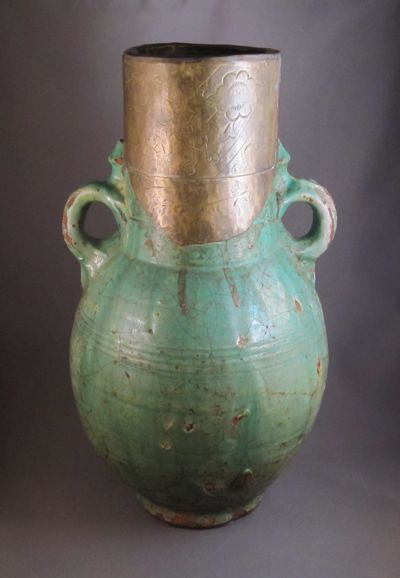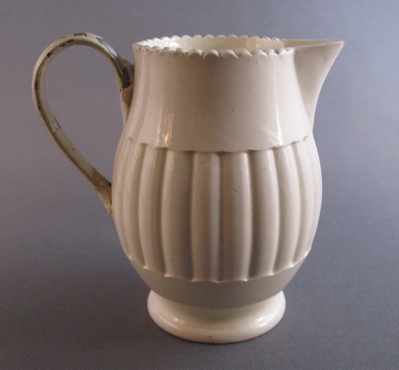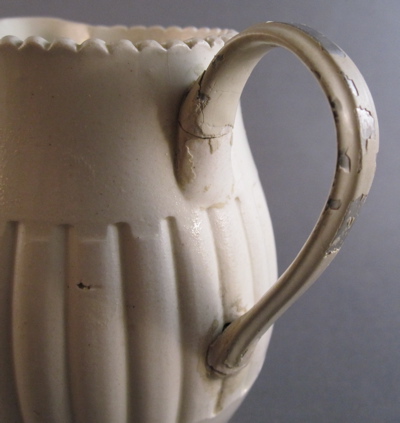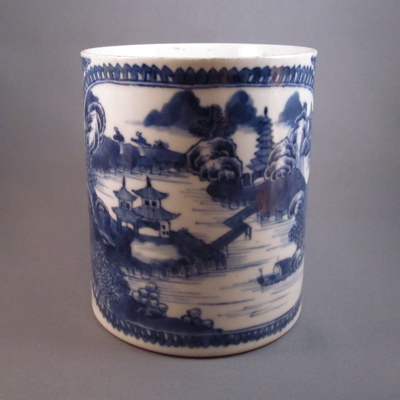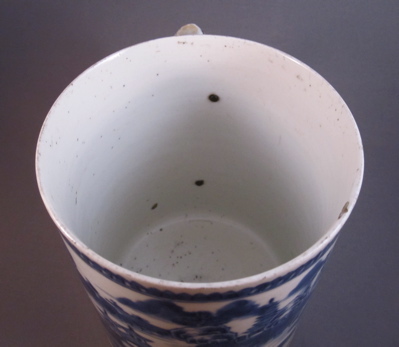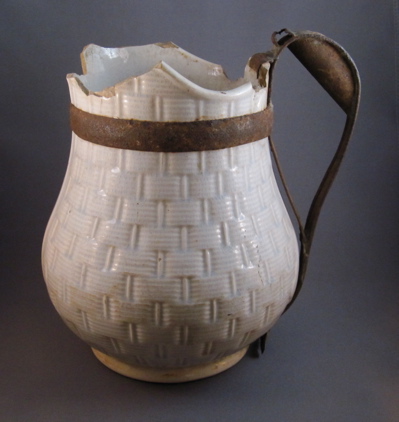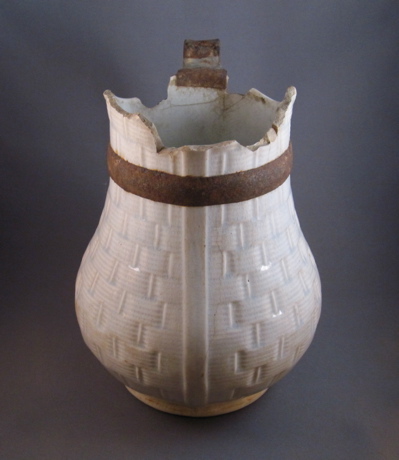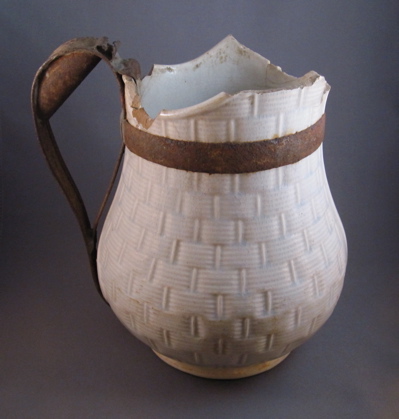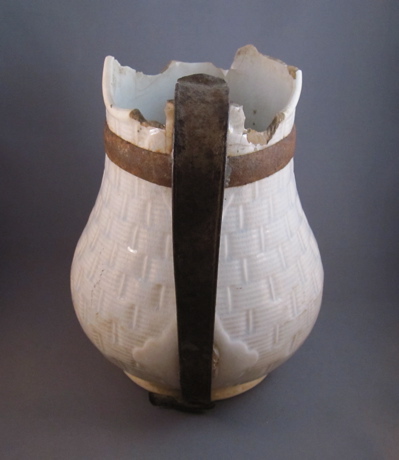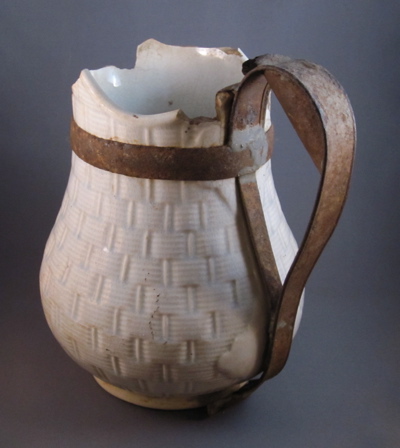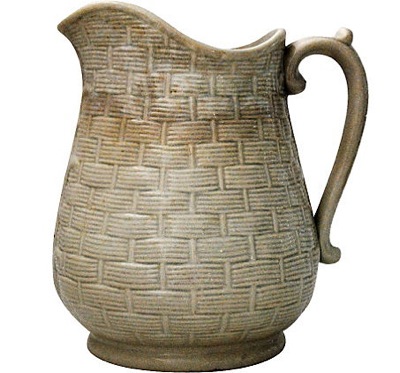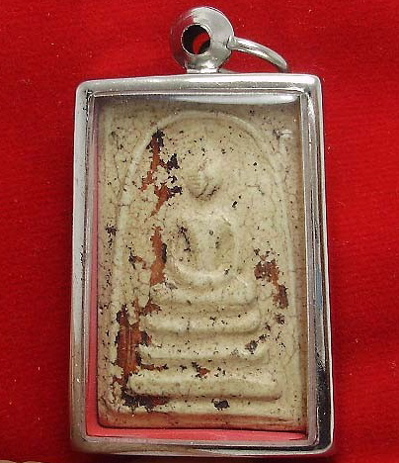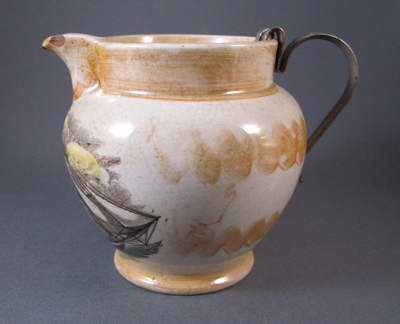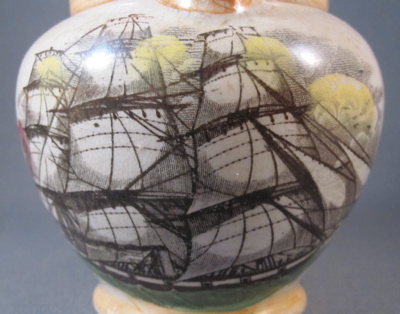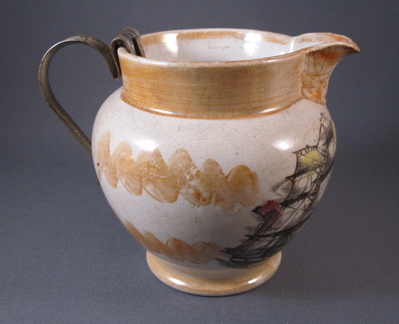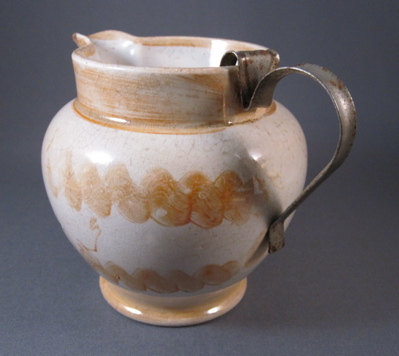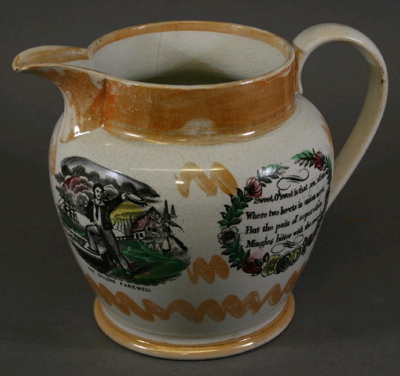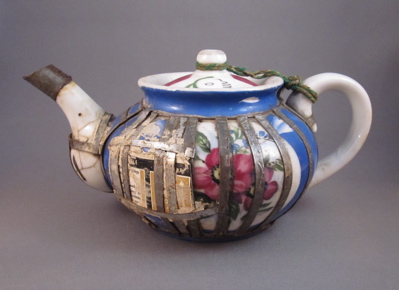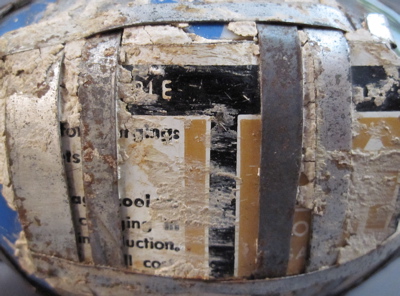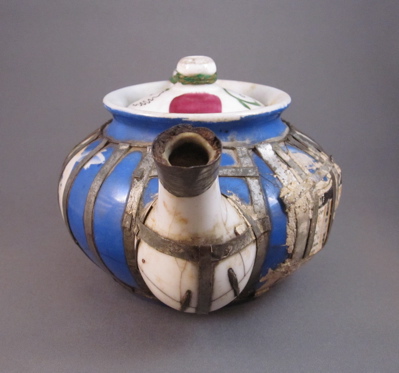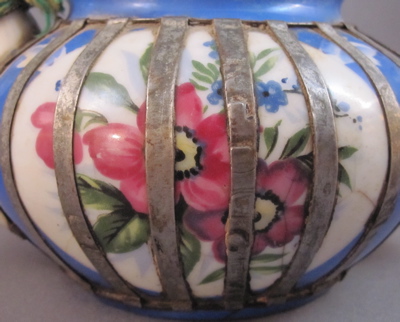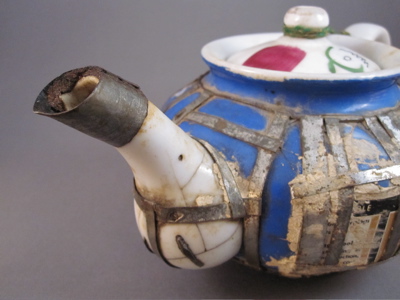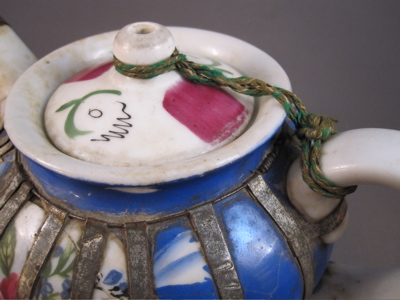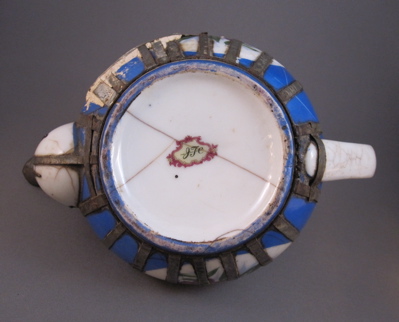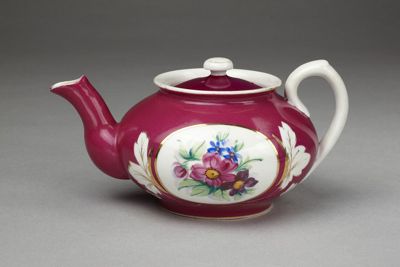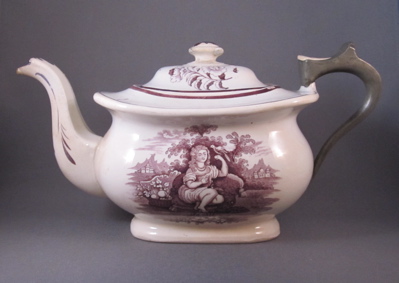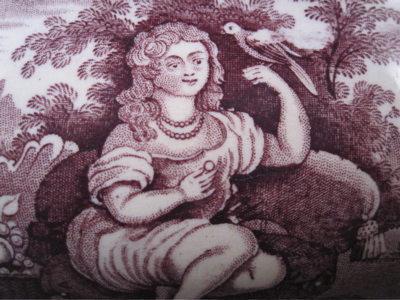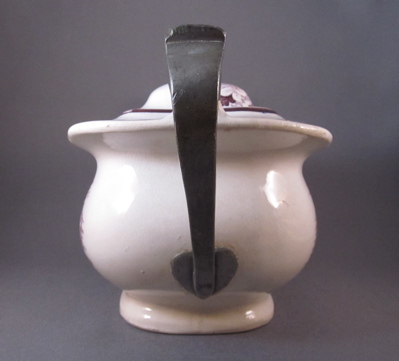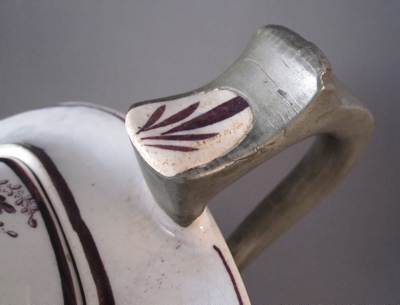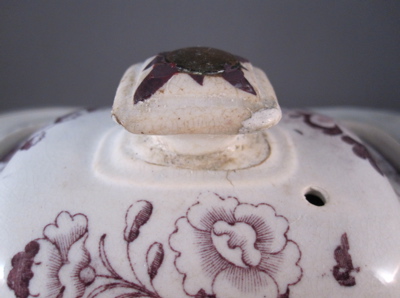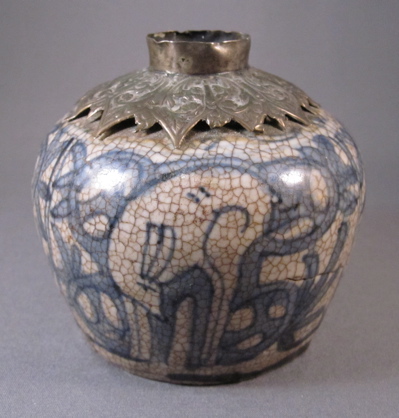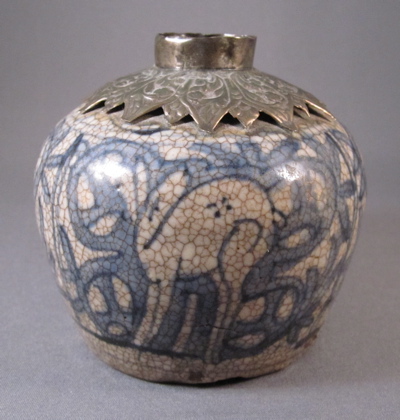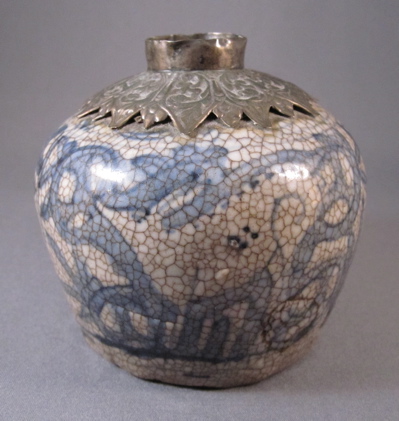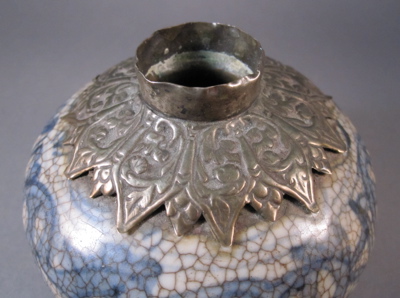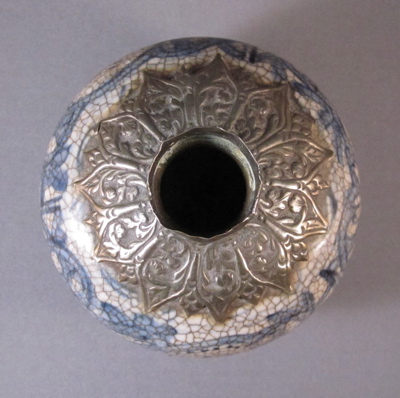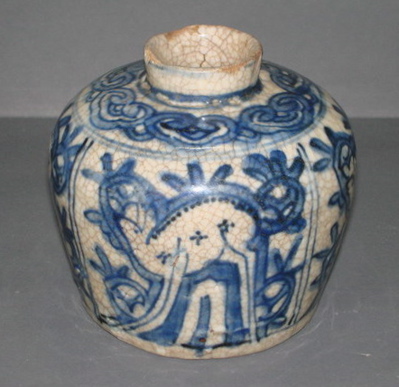I purchased this large and extremely heavy ceramic vessel about one year ago from a dealer who knew absolutely nothing about it. In the ensuing months, I have tried my best to research its country of origin and age, only to come to a screeching halt. A friend who works at the Metropolitan Museum of Art forwarded the photos on to a couple of experts in their fields and the results were less than satisfying. His response was: “The Islamic folks think it looks Ancient Near Eastern and the Ancient Near East folks think it looks Islamic”. I then sent the photos to a collector of ancient Chinese ceramics living in Hong Kong who had this to say: “…my personal thinking it maybe an old piece, possibly around Yuan-Ming 14th-17th century from the cutting of foot rim, glaze and the shape. You can imagine..how much there we spent times and money just to repaired by brass to mouth rim. We must used logically consideration. Last but not least, I predicted it’s from some kind small kilns in China which just a few people can identified…”. Hmm.
These are the facts I do know: the vessel has a distressed green crackle glaze over a red clay pottery body. It measures 14″ high, has an opening of 4-1/4″ and is 8″ wide from handle to handle. An asymmetrical brass collar with an incised floral pattern is covering most of the neck, presumably masking a damaged top. As far as the repair goes, it seems to be of Middle Eastern design, possibly Turkish.
I would greatly appreciate any information anyone may have to help me identify this truly puzzling piece.
